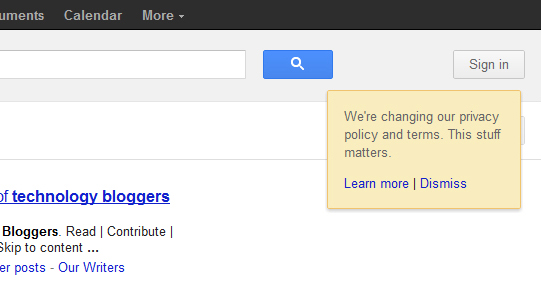Until recently I haven’t been as aware as I probably should have been of the Google update, which allows authors to claim authorship of their posts in the SERPs.
I was recently talking about the blog in the (Google) Webmaster Central Help Forum, when someone suggested that we should use Google Authorship. I had heard of it before, but wasn’t 100% sure what it meant, or why we should take the time to adopt it.
So after a little research, I am here to present my findings to you 🙂
What is Google Authorship?
Google Authorship is a relatively new part of search results, whereby Google shows the (Google+ profile) avatar of a person next to articles they have written in the SERPs. This means that people know who wrote something, even before they visit the page.
Google will not only give an avatar which it fetches from the writers Google+ profile, but it will also link to that persons profile. It might also provide additional information like how many circles the person is in. See the image below for more of an idea of how it looks.
 How Can I Claim My Posts?
How Can I Claim My Posts?
If you run your own blog, and you are the only person who ever writes on it, it is dead easy. Just add a link to your Google profile page with ?rel=author after it, and with the text being the same name as your Google profile, to your profile, or just every page of the blog.
The code would look something like this:
<a href="https://plus.google.com/114686389155717038852?rel=author" rel="author" title="Christopher Roberts on Google+">Christopher Roberts</a>
What if I Run or Am Part of a Multi-Author Blog?
If you are part of a blog with multiple authors, it can get a bit more complicated. Basically, the admin needs to make sure that there is no sitewide Google+ profile link, as that could mess things up. Each individual author will need to either link to their Google+ profile with the tag rel=”author” on every post they write, or link to their profile page on every page they write with the tag rel=”author” and then on their profile page link to their Google+ profile with rel=”me”.
It may sound a bit complicated, but it does make sense. If you don’t own a site, don’t worry about it. If you do and need some help, ask me in the comments, or send me a message 🙂
How Do I Claim Authorship of My Posts on Technology Bloggers?
Recently I have been very busy tweaking bits of WordPress’s code, in order to make it as easy as possible for you to claim authorship of the posts you write on Technology Bloggers.
There are three really simple tasks you need to complete. The first is to go to your Google+ profile ‘About’ page and under ‘Contributes to’ add Technology Bloggers – https://www.technologybloggers.org. The second step is to copy your Google+ profile URL and paste it into the ‘Google+ Profile URL’ box on your WordPress admin profile page. Finally in the box below (‘Google+ Name’) add your name as it appears on your Google+ profile. That is it! The blog does the rest of the work for you, and adds a link to your Google+ profile to your writer profile page.

A screenshot of the data you need to fill in on your profile, in order to claim authorship of your posts on Technology Bloggers.
If you don’t have a Google+ profile page, your link will just direct to your WordPress profile page. Not sure what I mean? Don’t worry, if you don’t have one, nothing bad will happen!
I have updated the post guidelines to include a section about how to link to your profile, however this article probably has a more detailed explanation!
A Final Word About rel=”author” and rel=”me”
If you are still confused about rel=”author” and rel=”me”, look at it this way: rel=”author” lets search engines know that the URL with that tag in is pointing to your author profile, be that WordPress, Google+, about.me or another; rel=”me” lets search engines that the URL with that tag in is another website/profile/blog etc. that is yours.
To see the Google Authorship in action you will have to wait a while for Google to index the pages and register the authorship. To check that your code is working okay and that Google can find your authorship, try using Google’s Rich Snippets Testing Tool.
For more information on Google Authorship, please check out Google’s help article on it.
